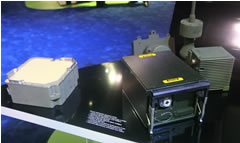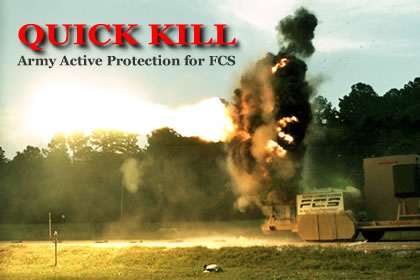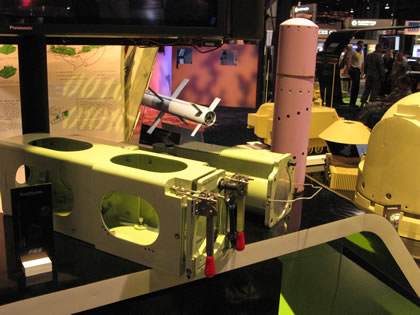The U.S. Army is developing a family of Active Protection Systems (APS) as part of its Future Combat Systems (FCS) ground-force modernization program. FCS is designed to bring Soldiers into the 21st century by equipping them with state-of-the-art vehicles, communication capabilities, sensors and protective systems. In the summer of 2008 the system has passed a major milestone by completing successful stationary and moving target intercept tests. These tests represent a significant step in design verification testing for the system, which includes defeating multiple incoming projectiles simultaneously and while on the move — a unique capability of the APS.
The APS is actually part of a more comprehensive “hit-avoidance system” that the Army is building into a suite of eight new FCS Manned Ground Vehicles types. This more comprehensive hit-avoidance system will give the Soldiers in the MGVs “full-scale 360-degree hemispherical protection,” said FCS Program Manager Maj. Gen. Charles A. Cartwright.
The FCS Active Protection System “is the only available vertical launch system that I’m aware of,” said Maj. Lewis Phillips, assistant product manager. Other Active Protection Systems out on the market employ horizontal launch systems. A vertical launch system, Phillips said, allows for redundant protection from all sides of the vehicle. That way, if countermeasures on one side of the vehicle fail or are disabled, countermeasures from another angle, or side of the vehicle, can still defeat the incoming round.
The system is designed to use two types of interceptors, one for intercepting close-in threats such as RPGs at close range, and a larger interceptor against faster anti-tank missiles and tank rounds, intercepted at a longer distance from the protected platform. Both are based on a common launch and propulsion system, utilizing a ‘dumb’, cylinder-shaped interceptor vertically launched from a side mounted container by a gas generator. The APS projectiles are delivered in ‘inserts’ that contain the tethered projectile. As the insert is locked in place it automatically connects to the system and is ready to operate.
The system is designed to use two types of interceptors, one for intercepting close-in threats such as RPGs at close range, and a larger interceptor against faster anti-tank missiles and tank rounds, intercepted at a longer distance from the protected platform. Both are based on a common launch and propulsion system, utilizing a ‘dumb’, cylinder-shaped interceptor vertically launched from a side mounted container by a gas generator. The APS projectiles are delivered in ‘inserts’ that contain the tethered projectile. As the insert is locked in place it automatically connects to the system and is ready to operate.





















